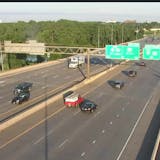Winter makes life more expensive. The season requires its own wardrobe of coats, scarves, gloves, hats, sweaters and boots. But your biggest concerns for winter are likely your house and your car.
The goal for both is to stay warm and safe — and hopefully save some money on heating costs and vehicle repairs.
Winterizing can sound daunting, but experts have a few tricks to make a smooth transition into winter. Planning ahead is important: It can be helpful to put together a checklist specific to your home and vehicles that can be consulted annually, and homeowners should generally start winterizing before the snow flies or the ground freezes.
Some winterizing can be do-it-yourself projects. For more complicated issues the state's mechanics, contractors and service providers are all deeply experienced and battle-tested in dealing with the elements.
Getting started
A home's windows and insulation are the first two big considerations for winter. Both are important for optimal heating in the home as temperatures outside drop below freezing.
"Just checking for drafts, that's the main thing," said Scott Hansen, sales manager with Osseo-based Minnesota Exteriors.
Homeowners can use weather-stripping or caulking for a do-it-yourself fix on drafty windows and doors.
As for insulation: "Go up in your attic and look," Hansen said. "See what you have for insulation. Most times you can just add more."



